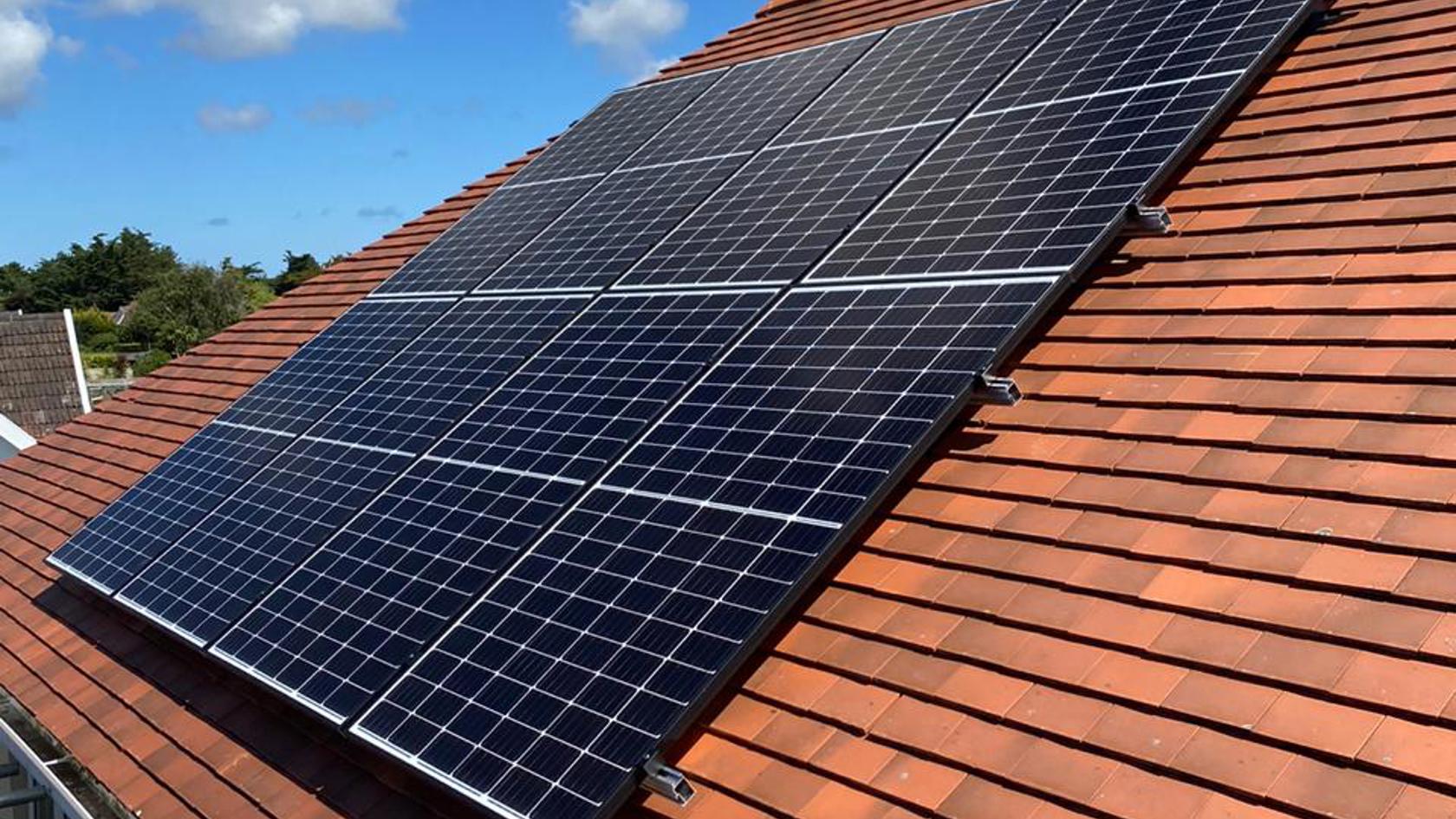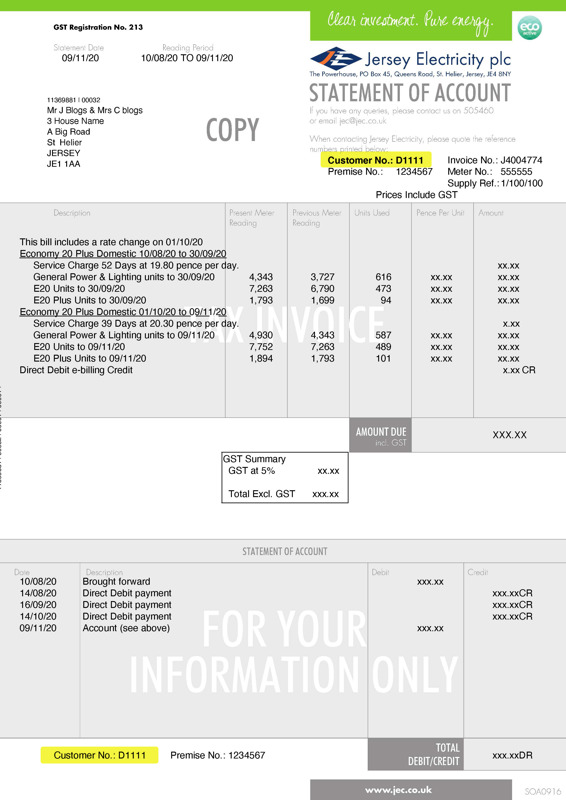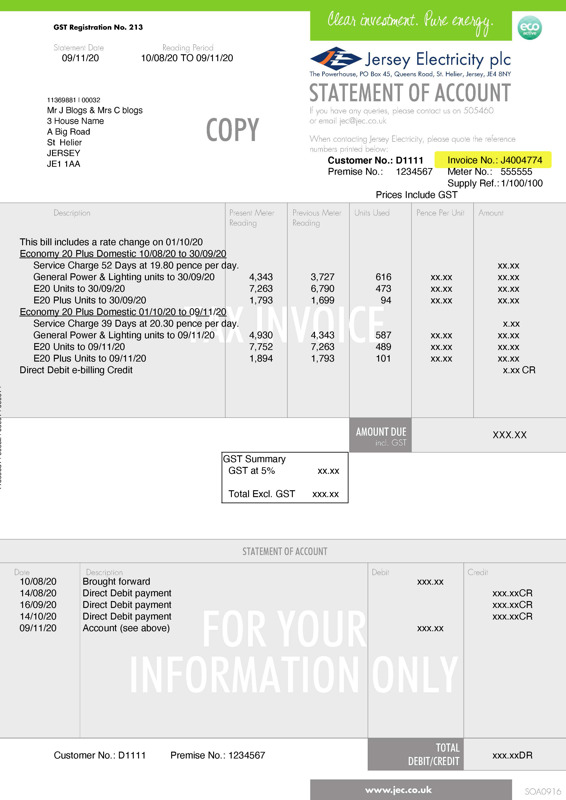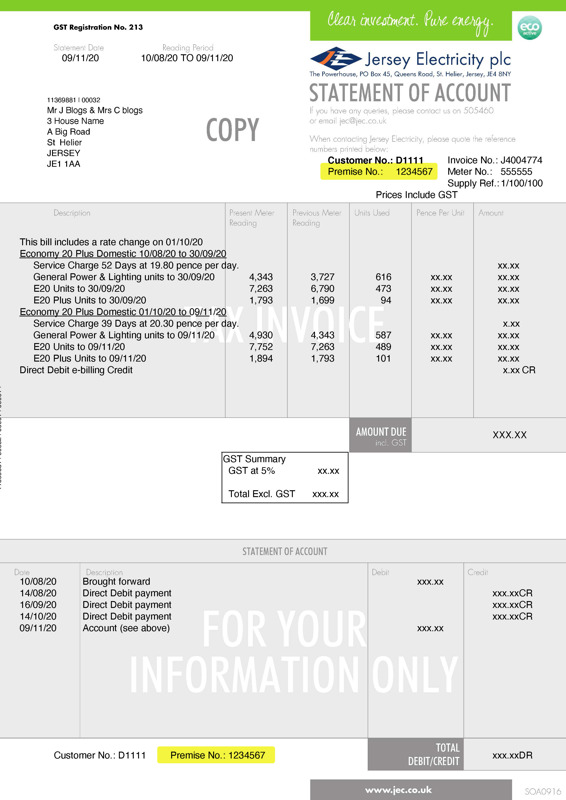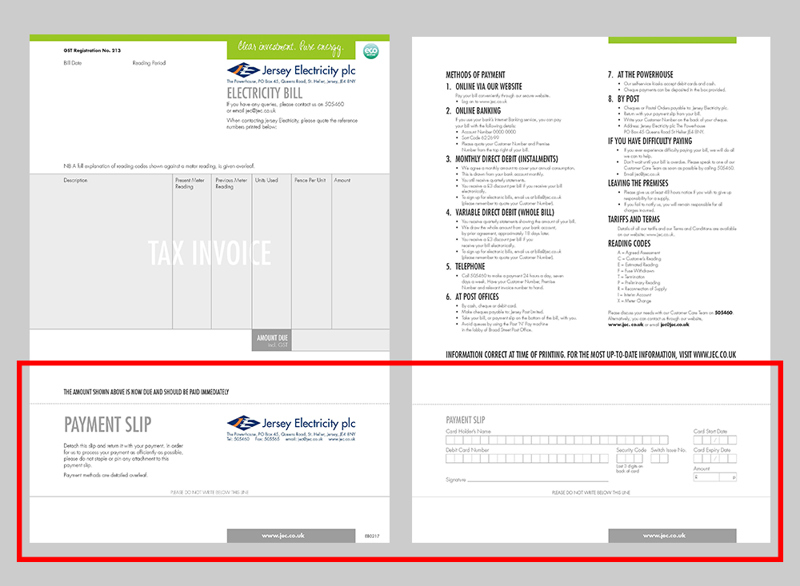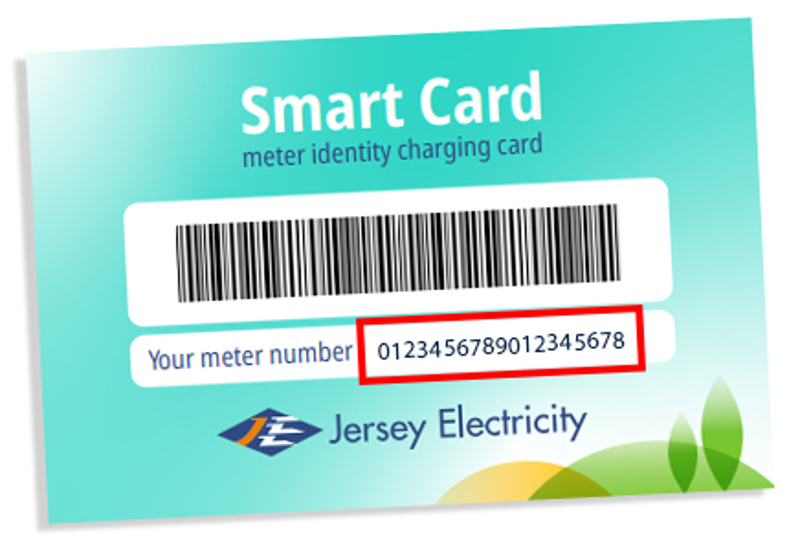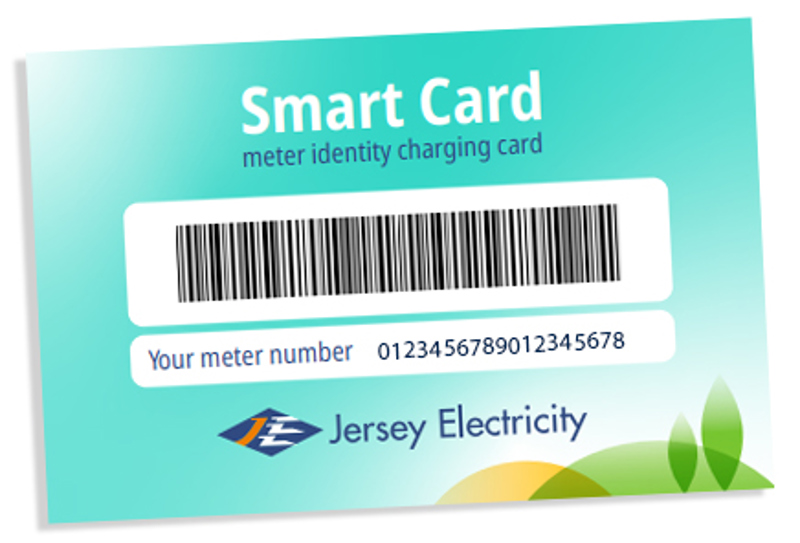What should I consider before I install solar PV?
Before installing PV panels on your home, ask yourself some questions: First, Why am I doing this? Is it for the environment to reduce carbon? Or is it to save money and cut my energy bills?
Second, what is the energy profile of my home? For example, have you already got electric heating? Are you on an off-peak electricity tariff? What is your annual consumption and how is that split between heating/hot water (which could be on a low-cost tariff) and General Power and Lighting? The new app My JE can help you with this by providing you with energy profiling details.
In Jersey, solar panels will not reduce the carbon footprint of your home because the electricity they generate will simply be replacing grid electricity that is already virtually completely decarbonised.
If you are looking to save money on your energy bills, you must ensure your array is accurately sized to meet your needs.
It is better to have a smaller array and consume all you generate than pay for a larger array than you need. Although you can export surplus electricity back to the grid, you will make the greatest savings by reducing your demand for electricity from the grid in the first place rather than selling back the excess.
How do I know what size of array is best?
Solar PV arrays’ performance is measured in kilowatt peak (kWp) - the number of kiloWatts a solar PV system will generate at its maximum performance level. Your installers will be able to tell you what size you need based on the energy profile of your home.
We recommend you size your array to meet your baseload demand and not just sized to fit the roof in order to deliver the most economic benefit for your investment. It is better to have a smaller array and consume all you generate than pay for a larger array than you need.
You also need to understand if you have a single-phase or three-phase supply from Jersey Electricity and ensure your solar array is matched to your three-phase installation.
Although you can export surplus electricity back to the grid, you will make the greatest savings by reducing your demand for electricity from the grid in the first place rather than selling back the excess.
At what price will Jersey Electricity buy my surplus electricity from me?
Our current Buy Back Tariff rate is 7.39p
Why is the Buy Back rate so much lower than the price I pay for electricity?
The retail price of a unit of electricity includes the cost to us of producing or procuring electricity from France or the EfW plant, the cost of maintaining and running the network, and a fair ‘return on assets’ to provide dividends to shareholders who enable us invest in the network. The Buy Back rate is purely what the power is worth.
I am on an off-peak heating tariff; can I connect an embedded generator to my off-peak distribution board?
No. Embedded generators cannot currently be used with our low-cost, off-peak tariffs for approved space and water heating.
We recommend you size your array to meet the general lights and power demand of your property only. The reason is that you will make the greatest savings by reducing your demand for electricity from the grid in the first place rather than selling excess units back to us.
We will, of course, pay for any excess units via our Buy Back Tariff, but you will continue to be charged the normal rate for your consumption on your heating tariff.
You could install battery storage alongside your embedded generator. So, when your generator is meeting the demand of your general lights and power load, any excess can be used to charge the battery to be used later to meet your general lights and power demand when you are not generating without the need to buy units from us.
Why can’t I use all my generated energy in my home?
The meter is a measuring device; not a controller. It will not divert energy or accumulate kWhs at one point of the day to be used at another point of the day.
Embedded generators must be wired to the general lights and power distribution board. Generators and storage batteries are not approved for heating that is connected to the off-peak board run on lower tariff rates.
Under these tariffs, if you generate in excess of your general lights and power demand, then the electricity will go through the buy back meter and we will pay for it, but any heating demand will be recorded on our normal meter and you will be charged according to your tariff and time of day.
Can I switch my generated energy between powering my heating/hot water and general power and lighting supplies?
Yes, if you are on General Domestic or Economy 7 (E7) Tariff. No, if you are on a multiple-rate, low-cost heating tariff.
Embedded generators and battery storage are not considered an approved load for our off-peak rates. Therefore, they can only be used to support your general lights and power loads.
You can also heat your hot water if you install a Solar diverter, which diverts spare generated electricity into your hot water tank before it exports to the grid.
How does the metering work?
We will install a buy back meter in series with our normal electricity meter. (Ensure there is enough room in your meter cupboard to allow this before going ahead with your installation.)
Any electricity produced by your generator will first be consumed by any equipment connected to your household general lighting and power (GLP) distribution board. Any equipment connected to a separate off-peak distribution board will not benefit directly.
Any excess electricity will travel through the buy back meter where we will register the units and pay you for them at our buy back rate. Once the electricity goes through the buy back meter it becomes our property.
Embedded generators must be wired to the general lights and power distribution board. Generators and storage batteries are not approved for heating that is connected to the off-peak board run on lower tariff rates.
Under these tariffs, if you generate in excess of your general lights and power demand, then the electricity will go through the buy back meter as described above, but any heating demand will be recorded on our normal meter and you will be charged according to your tariff and time of day.
Why doesn’t the meter divert my spare generated energy into my heating/hot water rate?
The meter is a measuring device; not a controller. It will not divert energy or accumulate kWhs at one point in the day to be used at another point of the day.
Embedded generators must be wired to the general lights and power distribution board. Generators and storage batteries are not approved for heating that is connected to the off-peak board run on lower tariff rates.
Under these tariffs, if you generate in excess of your general lights and power demand, then the electricity will go through the buy back meter and we will pay for it, but any heating demand will be recorded on our normal meter and you will be charged according to your tariff and time of day.
What are my options if I have spare generated energy?
You can sell any excess units to us via our Buy Back Tariff. Alternatively, you could install battery storage alongside your embedded generator. So, when your generator is meeting the demand of your general lights and power load, any excess can charge the battery to be used later to meet your general lights and power demand when you are not generating without the need to buy units from us.
You can also install solar diverter, which diverts spare generated electricity into your hot water tank to heat your water before it exports to the grid.
Can I heat water with solar PV?
Yes, by installing a solar diverter, which diverts spare generated electricity into your hot water tank via your immersion heater. Once the tank is full, it will resume export to the grid.
How much electricity does a solar PV system output?
Your installer should be best placed to tell you. They will be able to produce a solar PV design for your property, with an estimated annual system yield in kWh.
Solar PV systems work best in full sunlight. They can work on cloudy days but the stronger the sunshine, the more electricity they generate. Other factors which affect performance include:
- Time of day
- Angle of the sun
- System orientation
- Cloud and shade cover
What is the difference between PV and thermal?
Solar thermal systems use free heat from the sun to directly heat your hot water. They usually consist of an array of roof mounted solar panels, called collectors, and purpose-designed hot water cylinder. Solar PV generates electricity that can be used to heat water and power other electrical appliances.
How long will the payback be if I install a typical 2kWp PV installation?
Your installer will be in the best position to tell you this. But they need to bear in mind our Buy Back rate and lack of Government subsidy when making the calculation.
Can I store my spare generated energy?
Yes, you could install battery storage alongside your embedded generator. So, when your generator is meeting the demand of your general lights and power load, any excess can charge the battery to be used later to meet your general lights and power demand when you are not generating without the need to buy units from us. The battery cannot supply heating if you are on an approved heating low-cost tariff.
Can I use a battery to store cheaper off-peak electricity for use during the peak-rate?
No. You cannot use battery storage to supply heating (on or off-peak) on a dedicated circuit and low-cost, multi-rate tariff.
Do I need to inform Jersey Electricity of my installation?
Yes you do. Unlike the UK, we need to approve the generator prior to installation and within 30 days of commissioning. Please see the Trade area for details.
My installer tells me you do not have the right meter to allow me to use all my generated power; why is this?
It is not the meter that prevents this, it is your tariff. Embedded generators must be wired to the general lights and power distribution board. Generators and storage batteries are not approved for heating that is connected to the off-peak board run on lower tariff rates.
Under these tariffs, if you generate in excess of your general lights and power demand, then the electricity will go through the buy back meter and we will pay for it, but any heating demand will be recorded on our normal meter and you will be charged according to your tariff and time of day.
How big can my generator be?
This depends on the electricity network in the area. It can be any size provided we conclude there will be no unacceptable network disturbances caused by your generator, and it complies with either G83 or G59 requirements.
However, anything above 17kW single phase or 50kW three phase will require a special connection agreement as this size of generator will need a larger than standard service.

